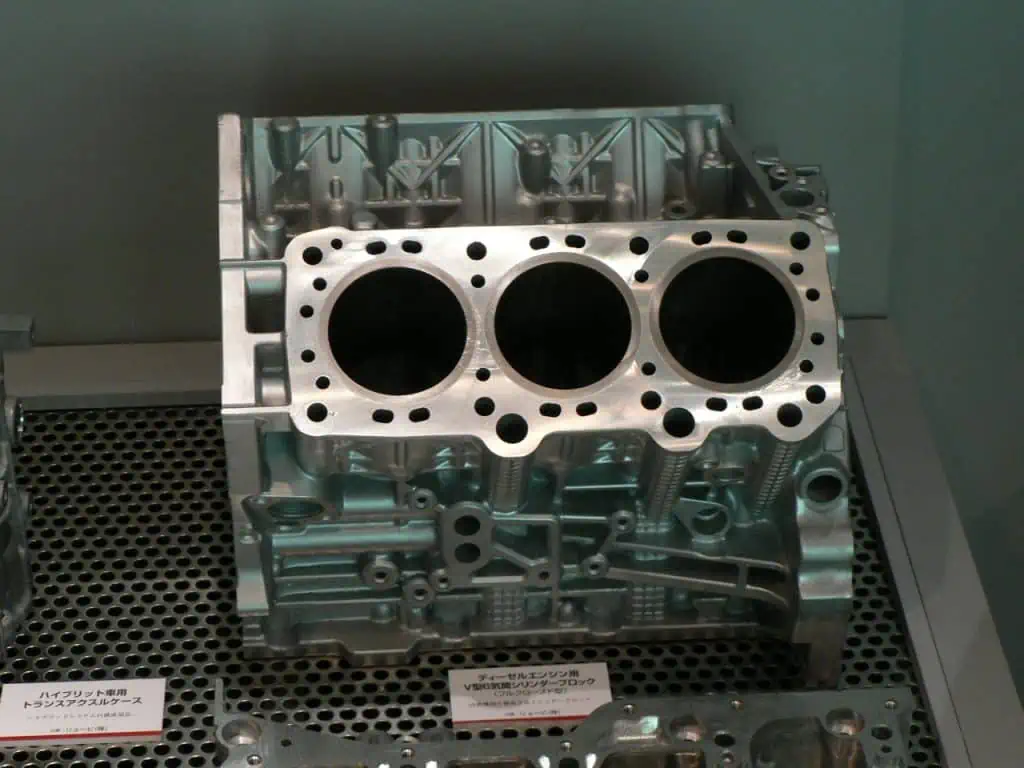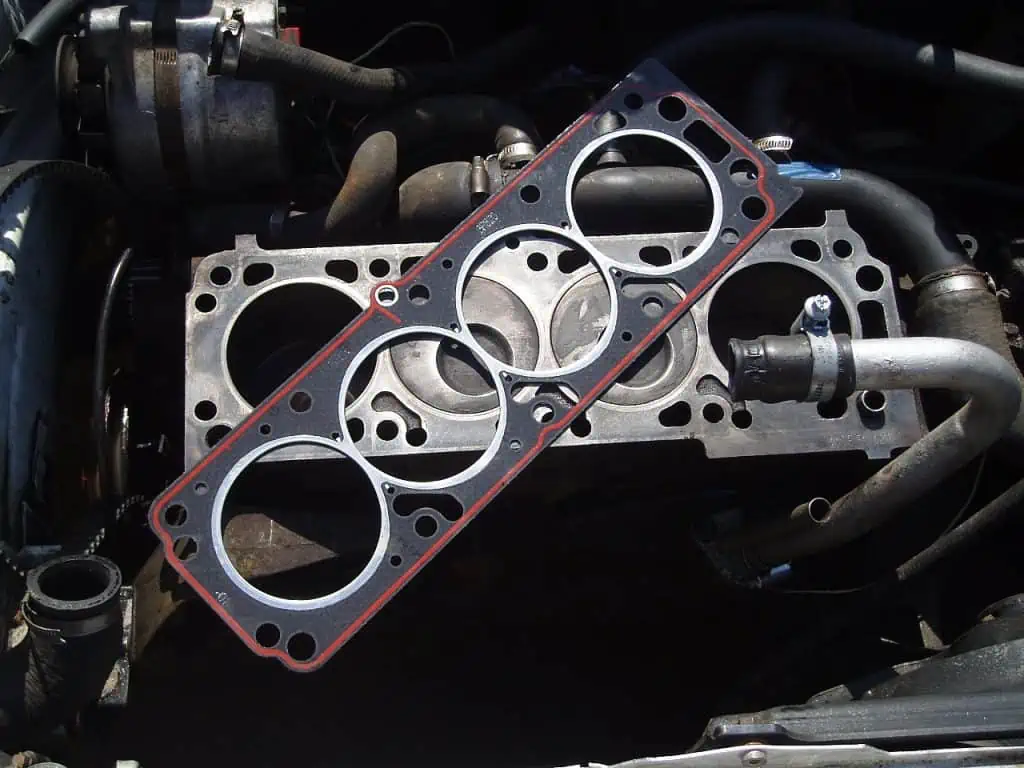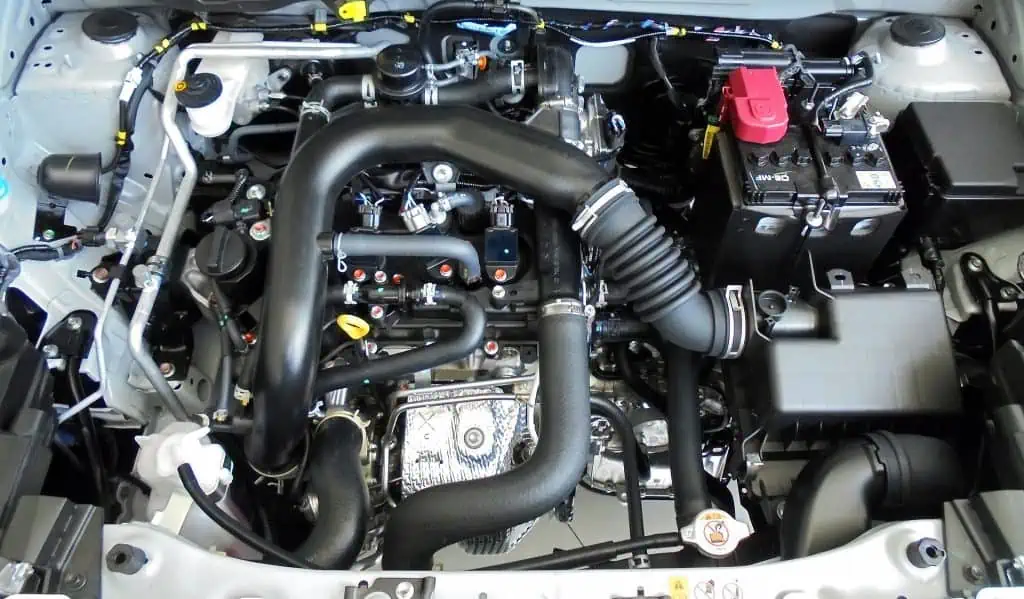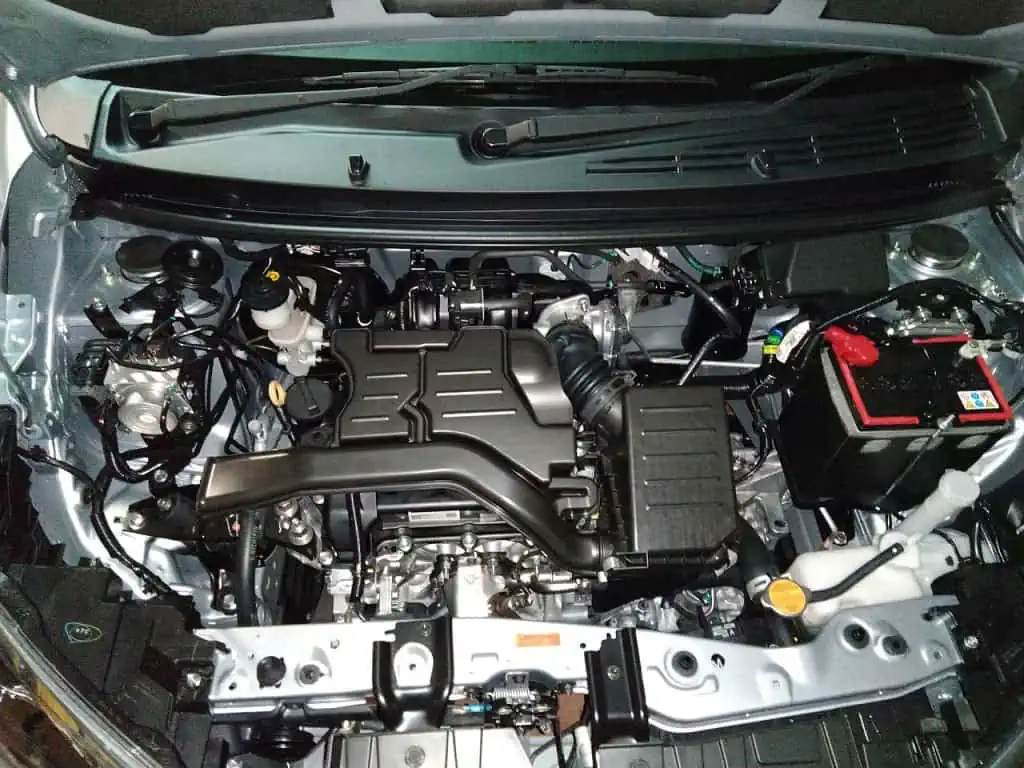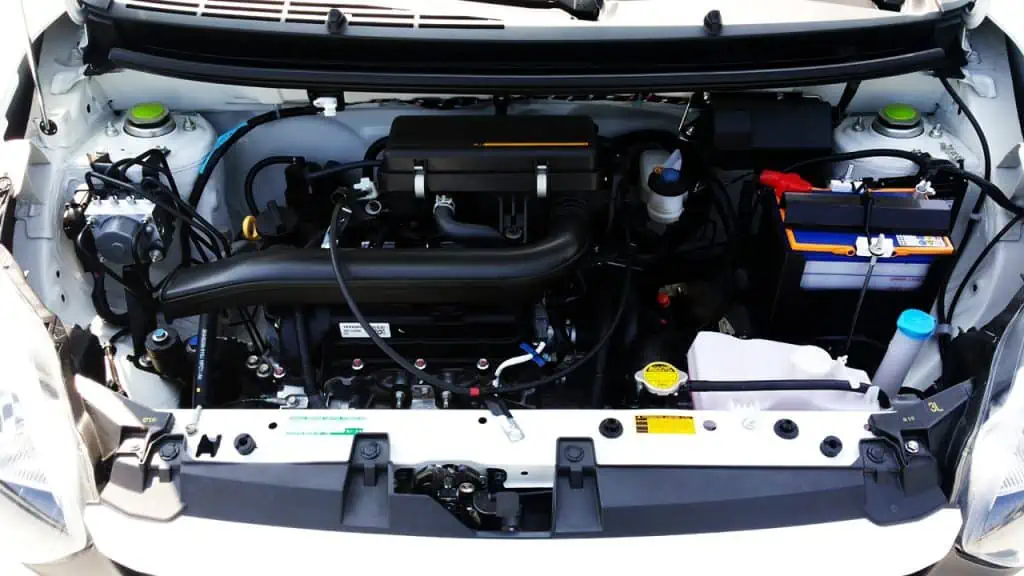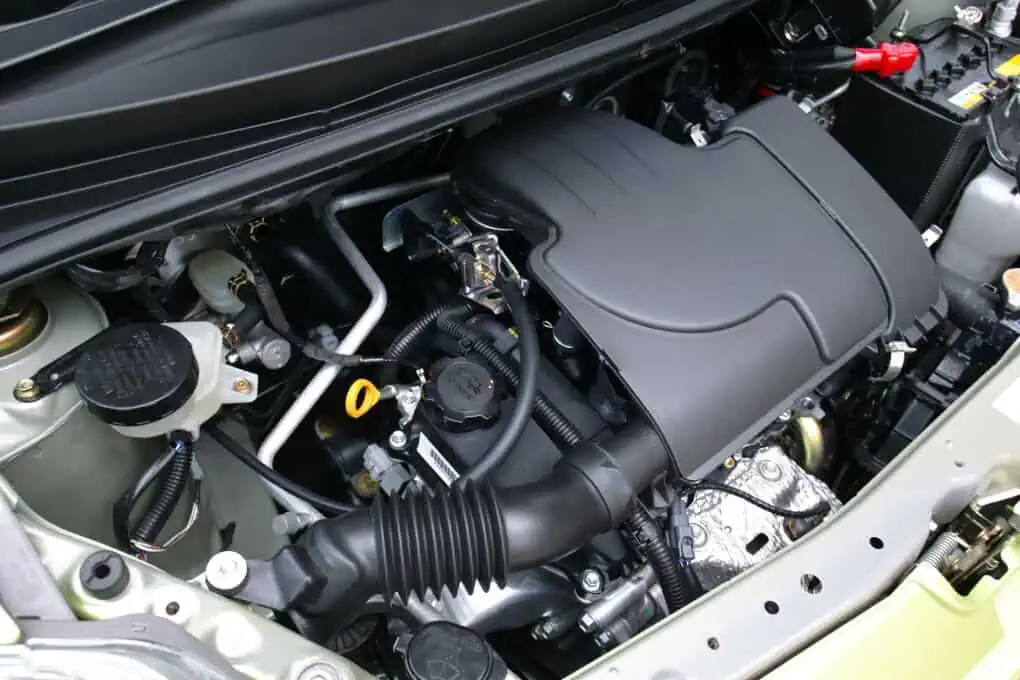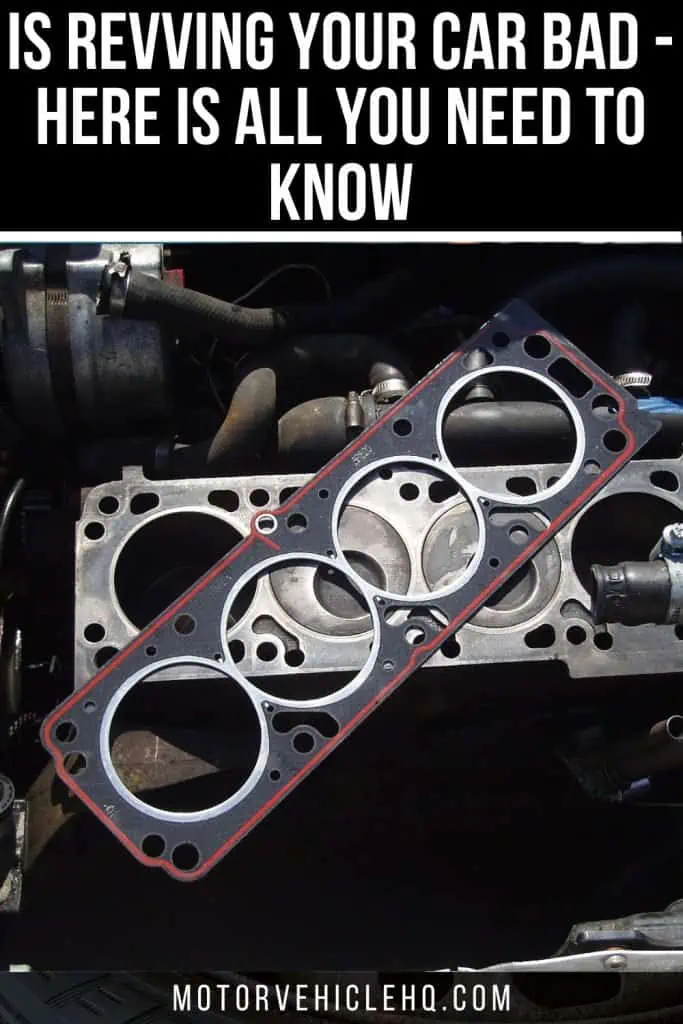Do you frequently rev your engine in the morning and wonder if this is hazardous for you? If you find yourself in this scenario and want to learn more about this subject, you have come to the correct place because there is a lot to cover.
Even though you usually don’t have to, revving your car’s engine is a lot of fun. Nothing makes you happier than a loud exhaust that makes you smile.
If you’re one of those men, I can relate because I frequently feel the want to rev my car for no apparent reason and find myself in a similar situation.
I’m sure my neighbors despise me, but so what? One benefit of being a car man is that. One of the things we want to do is rev our engines. We are aware that many people find this sound to be unpleasant.
But it is for us and we will keep doing it. But have you ever wondered if revving your car’s engine is hazardous for it? In this essay, we’ll talk specifically about that.
We will first discover the motivations behind people wanting to rev their engines. Then, we shall discover the rpm limit and whether is revving your car bad.
After that, we’ll talk about the potential harm that engine revving could cause to your car and the strategies used by the manufacturers to discourage it. So, keep reading if you want to discover more.
What Does Rev a Car Mean?
The term “rev car engine” must be all too familiar to the racers. Simply said, revving a car is the act of increasing the engine’s speed, which causes an audible noise to be created.
Likewise, if you are familiar with RPM (revolutions per minute), revving an automobile engine refers to increasing this RPM when the vehicle is in neutral or park.
To ensure driver safety, every car engine is built with a set maximum rev range. More fuel is burned when you crank the engine more quickly.
A typical car engine block by 160SX / CC BY-SA 3.0. Think about putting a lot of heat through a cold object. A temperature swing caused by this will almost probably cause the engine block to shatter, necessitating the removal of the entire engine. So, be patient and let the car a few minutes to run. Many people make this mistake when they rev their car in the morning to get it warmed up.
When you press the accelerator, the engine of your car starts to rev up. Your engine will then start up, the gas will be increased, and the automobile will accelerate down the slope.
It is not uncommon to see drivers rev their engines while stopped at a red light while they are driving, or even when the car is parked. What motivates drivers to do that?
The capacity of the high-revving automobile engine is its main advantage, as we already know. Raising maximum torque or RPM will boost power.
To produce high-capacity figures, for instance, you would want a lot of engine power if your automobile had a 2.0-liter engine. On the other hand, increasing the power output simply by designing for higher revs.
Another straightforward explanation is that some drivers rev their engines to show off, relish the rush, or indulge in their high-speed craving. I depress the gas pedal as soon as I let go of the clutch pedal. This series of steps results in a seamless transition from pausing to accelerating.
What Inspires Drivers to Rev Their Car Engines?
Since the early days of the internal combustion engine, people have just enjoyed cranking their engines. I believe there is a connection to our psychology. We are being fed that good feeling by the sound. As they would say, a good revving engine will make you smile.
And it’s true what they say. So turning the engine over is like identifying who is the loudest and strongest vehicle on the road. folks will be informed.
This is presumably a remnant of our evolutionary process. Nevertheless, the fact remains that we enjoy revving our engines. We feel happy while doing it.
While others do not agree with this because not everyone finds the noises to be particularly pleasant. And, to be honest, I completely understand them.
Hence, make sure you are far from other people whenever you decide to rev your engine. Avoid revving the engine in the morning in particular. However, for many people, this can be a challenging undertaking. Particularly those who own V8 cars and wish to wake up to the sound of that V8 rumble.
If you had a V8 and were able to start it, you would probably let everyone in the area know. You may enjoy the respect of car enthusiasts, but the majority of your neighbors will likely despise you.
I can tell you this from personal experience. I had to somewhat downsize because of this. Yet, have you ever considered the question Is revving your car bad? To understand it, let’s first talk about what a rev limiter is.
What Is the Maximum Limit for Engine Rev?
Before we discover is revving your car bad. As this is where it all starts, let’s first examine what a rev limiter is.
Your engine has a mechanism called a rev-limiter placed in it. The purpose of this component is to safeguard the engine from itself. Yeah, the rev limiter does indeed shield the engine from itself.
A Head gasket in dark gray with a red border by Collard / CC BY-SA 3.0. If you decide to repeatedly rev your engine and strain it to the maximum, the head gasket can also fail. The head gasket is the component most at risk of failing in this type of engine maintenance. The head gasket, as you are aware, acts as a seal between the engine’s block and head.
If the rev limiter doesn’t engage because the engine has no restriction, it will rev as high as it can, which may destroy the engine if there were no rev limiters in place on cars.
How do these rev limiters function then? However, it’s fairly straightforward; the engine’s internal components are being restricted by the rev restriction. Rev limiters come in two varieties. both those that restrict the fuel and those that restrict the spark.
Fuel delivery restrictions are the most typical rpm limiters you may encounter on the road. The fuel simply stops off when the engine reaches the limitation, returning to the basic rpm of many engines, which is 800 rpm.
Spark plugs are also being shut off by several other rev limiters. However, due to the possibility of the unburned gasoline escaping into the exhaust and damaging the catalytic converter, these are less frequent. The fuel shouldn’t burn inside the exhaust system.
Every engine has a rev limit, as you are aware. This rev cap is set by the manufacturer. It follows that exceeding this rev restriction could harm the engine. Is revving your car bad, then? In the next section, we’ll go into further detail and find out if revving your car is bad.
Is Revving Your Car Bad?
The engine and other contributing elements will determine whether or not it will be bad, thus the answer to this issue is that it depends. Nevertheless, why? Let’s expand.
I’m starting this primarily because some of the engines want to rev while others don’t. Some engines simply enjoy operating at low RPMs because it makes them feel secure and safe.
You run the risk of causing engine damage if you try to crank these engines above 3,000 RPM. They are frequently smaller-displacement chain-driven engines. If you frequently rev an engine like this, eventually it will start to blowby, and you will have to bid it farewell.
Moreover, pushrod V8 engines hate it when their maximum revs are reached at 6,500. notwithstanding a large number of powerful pushrod engines.
It is not advised to rev an average engine up to 6,500 RPM. The engine’s interior may suffer significant damage as a result of this.
Some engines, on the other hand, enjoy being revved. like Honda motors, or even BMW vehicles. When they reach 8,000 RPM, they only purr.
And from there, you can determine what kind of engine is sensitive to revving. Most frequently, these are engines with high compression ratios and high rev limits. 8,000 RPM, or occasionally 8,500 RPM.
Is revving your car bad, then? It is, indeed. No matter how much horsepower your engine produces, continuously revving it will do no good for the engine and will hasten the internal parts’ deterioration, which will cause the engine to lose compression.
When Is It Safe to Rev Your Car Engine?
Even powerful engines that are regarded as being reasonably safe to rev. It is important to note that until a few conditions are met, you cannot rev them.
A Toyota turbo engine by オーバードライブ83 / CC BY-SA 4.0. If you attempt to rev these engines above 3,000 RPM, you run the risk of damaging the engine. They often use chain-driven engines with smaller displacements. An engine like this may ultimately start to blowby if it is frequently revved, at which point you will have to say goodbye.
When you decide to start some performance vehicles, such as the BMW M3, you’ll see that there are several orange bars before the rev restriction.
The engine is cold, as evidenced by this. As a result, it is limited to what you see on the cluster. You can start pushing the car to get it to the top RPM as soon as the limit starts to diminish.
These devices are not typically placed in autos. Hence, how much you want to push the car depends on you and your sentiments in the majority of cases.
It’s crucial to remember that you should never rev an engine when it’s cold, regardless of how powerful it is or what RPM it can handle.
Consider running a lot of heat through something chilly. This will generate a temperature swing that could harm the engine block and almost certainly result in cracking that will require dismantling the entire engine.
So, be patient and let the automobile run for a few minutes. When they start their automobile in the morning and rev it to warm up, a lot of individuals make this error. This is not a wise method. When the car is cold, don’t rev it.
Start it and give it time to finish. It’s frequently suggested to wait for the engine to warm up and for the RPM to decrease for a few minutes before driving the car. The ideal method is this.
What Form of Damage Could Your Car Suffer from Revving It?
Having discovered the response to the question, is revving your car bad? We concluded that exceeding a particular RPM can be harmful to the engine and its internal parts since doing so causes the engine to heat up quickly, which in turn damages the engine block.
Moreover, damaging the engine while it is operating at high RPMs is a possibility. But what sort of harm can the engine sustain? We’ll go over every circumstance that could occur when revving an engine in the chapters that follow. So let’s get started.
1. Revving the Cold Engine Causes Engine Block Damage
You might expect some internal engine damage if you chose to crank your engine hard while it’s still cold. Because you are working with metal, this is the situation.
The heat causes the metal to expand and compress. Also, if you decide to thrash the automobile without letting it warm up, the engine block itself may sustain damage.
Considering that the oil is low in the engine whenever you turn the key. indicating that the oil needs time to heat up and move. The oil is thick and cold when the engine first starts, and when it starts to rev, it barely has time to get to all of the holes it can and lubricate the parts.
Possible scarring of the cylinder walls may result, and there may be heat-related issues that harm the block and cause it to shatter. As you are aware, metal doesn’t like to have a lot of heat applied to it at once. The same is true in cold weather.
Hence, if there are numerous heat cycles like this, the metal may lose some of its properties, become brittle, and break. particularly if the block is constructed of aluminum. a metal that is extremely brittle and responds strongly to various environmental variables.
Is revving your car bad, then? You run the danger of engine damage occurring at any time if the engine is cold. Therefore refrain from doing it. Let’s go on to the following likelihood now.
The engine bay of a Toyota car by Shmee150 / CC BY-SA 4.0. Every time you turn the key, the engine’s oil level is low. The oil requires time to heat up and move, which is what this means. As the engine initially cranks, the oil is heavy and cold, and it barely has time to reach all of the holes it can and lubricate the parts before the engine starts to rev.
2. When Revving a Cold Engine, You Could Spin a Rod Bearing
When someone applies a lot of pressure to the engine without being ready, the engine can malfunction in several different ways. One of these approaches is a spinning wheel bearing. While the engine is cold and being revved, the bearing may spin and cause the engine to fail.
What causes this, then? Every time you decide to rev the engine while it’s cold, this happens. Between the bearing and the crankshaft, oil ought to be present. As a result, the crankshaft rotates without rubbing the bearing because it is properly greased.
And this is what happens every time you damage an engine that is still warm. There is not enough time for the oil to lubricate the bearings. resulting in the bearing spinning while sticking to the crankshaft.
And this is something you don’t want to happen since there could be damage to the crankshaft itself, and getting a new crankshaft would be very expensive.
You’ll pay more than $1000 for one, even if it’s used. For further information, please visit the website.
Never engage in this action. Although some engines are more prone to spinning a rod bearing, whether this occurs also relies on the engine itself. But because this is an expensive remedy, don’t gamble with it.
3. When Revving a Cold Engine, You Run the Risk of Damaging the Turbo
You can potentially harm your turbine if you are driving a turbocharged vehicle. The turbine needs oil to function, and if there isn’t any oil inside the turbo to cool the turbine off, you risk permanently destroying it.
But how is it that revving your car may do this damage? It is quite easy to explain. The oil is rather thick when the engine first starts. But, as the automobile warms up, the cold oil becomes progressively thinner.
Only in this scenario, when the oil reaches the thinnest operating temperature, can it effectively lubricate all of the parts.
Meaning that since the turbine is a distinct component from the engine and the pressure needs to build up gradually to adequately lubricate it, the turbine will be most affected by revving your turbocharged engine.
Hence, increasing the boost could harm your turbo and result in its failure. Because of this, you shouldn’t perform this action or rev your engine when it is cold. Is revving your car bad, then? If you are pushing the car with the engine cold, then yes, it is.
4. A Rod Can Be Thrown Outside the Block
We now know is revving your car bad when the engine is cold. Let’s talk about is revving your car bad when the engine is hot now. And even if you exceed the rev limitation, the response is still affirmative.
When a rod ends up on the side of the engine block, it is most likely to fail catastrophically. All of this occurred as a result of the engine being operated at full capacity.
Hence, if someone claims that it just decided to self-destruct when they were running it at 2000 RPM, they are lying to you.
A typical car engine by Areaseven / CC BY-SA 3.0. Without being prepared, someone applying a lot of pressure to the engine can cause it to malfunction in several ways. A spinning wheel bearing is an example of one of these methods. The bearing may spin when the engine is cold and is being revved, leading to engine failure.
It’s not a good idea to push the engine to its absolute limit. So, you must stay away from it. Even powerful engines can crash catastrophically. And you could envision what would happen if you constantly drove your V8 Mustang to 6,000 RPM.
If you don’t want to replace the engine and shell out thousands of dollars for it, don’t do it. So, is revving your car bad in a hot environment? It is, indeed. There are also some other points of failure, which we’ll discuss next.
5. Blowing a Head Gasket While Revving Your Car Is Possible
The head gasket could also fail if you chose to crank your engine frequently and push it to its absolute limit. When it comes to this kind of engine work, the part that is most vulnerable to failure is the head gasket.
As you are aware, the head gasket serves as a seal between the engine’s block and head. The gasket maintains the proper seal and prevents the mingling of coolant and oil.
Expect this head gasket to fail and the engine to malfunction whenever you strain your engine to its breaking point. This may be seen by keeping an eye on the oil and noticing how it is changing into a milky fluid.
Is revving your car bad, then? If you push it to the limit, yes. What additional components of a car can break down when it is being revved? We’ll see.
6. More Things That May Fail If You Continue to Rev Your Car’s Engine
Is revving your car bad, then? It is, indeed. What other parts might also malfunction if you overrev your engine for an extended period?
The compression rings would likely be the initial element. These rings are maintaining the compression inside of your engine. Too much engine revving will cause the compression rings to wear out too quickly, which can exacerbate blowby.
The front and back primary seals are the next. On both ends of the crankshaft, there are rubber seals that keep the oil inside the engine.
Hence, leaks may form when you rev your car excessively. Also, since they are so challenging to replace, they are pricey.
The oil pan gasket can potentially fail if you crank your engine for too long. If the oil pan gasket is poor, it may fail due to the significant pressure buildup.
Next, there are the valves, which are likewise notorious for failing. If you enjoy revving the engine, burned valves are one of the main culprits. So, is it terrible to rev your engine?
It is, however, to try not to rev the engine for too long or to the limiter. By performing this, you will considerably extend engine life and ensure that your engine doesn’t break down.
A Toyota engine by Tennen-Gas / CC BY-SA 3.0. Pushing the engine to its utmost limit is not a good idea. So, you must avoid it. Even strong engines are susceptible to catastrophic failure. And you could picture what would occur if your V8 Mustang was continuously driven at 6,000 RPM. Don’t do it if you don’t want to spend thousands of dollars replacing the engine.
How Can You Rev a Car’s Engine?
Because you have a fundamental understanding of what an engine revving means, let’s move on to understanding how to operate your engine:
Step 1: Start Your Vehicle
Take out your key, turn the ignition, and wait a short while (20 to 30 seconds) for the engine to warm up.
When your engine is idle, you should check the RPM, which reflects the speed of your engine, on the automobile gauge (tachometer). This allows the engine oil to circulate and lubricate moving parts while your car is still for a brief period.
Step 2: Activate the Gas Pedal
You will press your foot down on the accelerator in either park or neutral after waiting for the vehicle to idle for roughly 10 to 30 seconds. You will notice the engine getting louder and the needle on your car’s gauge moving up at that point.
Please be advised that you shouldn’t press the gas pedal down when you begin to rev. If your RPM approaches the red line, you shouldn’t let up on the gas pedal. Don’t forget to follow the parameter by checking your tachometer.
You can hear the thrilling sound of an engine revving if you press the rev-up pedal while your automobile is in neutral or park.
Your engine will rev at this point, but your wheels aren’t receiving any power. Your car won’t go forward or backward because of this. Your engine will rev higher the harder you press the gas pedal.
Step 3: To Restore the Idle RPM, Let Off the Gas Pedal
You can use the clutch to shift into manual gear after the engine makes odd noises, or stomp the brake to shift into automatic gear. You can then carry on driving as normal.
With a manual transmission, you can barely crank the engine while driving.
What are Manufacturer Rev Restrictors – What Do They Do?
Special rev limiters are being added by some automakers to their high-performance cars. They are currently highly fashionable. Particularly on Porsches, Audis, and other German automakers who don’t want you to wonder is revving your car bad to yourself.
Simply put, while the automobile is stopped, you won’t be able to rev the engine over 3,000.
The components of a car engine by Yones / CC BY-SA 3.0. The initial component would probably be the compression rings. Your engine’s compression is maintained by these rings. Excessive engine revving can worsen blowby by causing the compression rings to wear out too soon. Next are the front and rear primary seals. Rubber seals on either end of the crankshaft keep the oil within the engine.
Reckless Driving Habits: Information to Prolong the Life of Your Vehicle’s Engine
- Since gasoline sediment gathers at the bottom of the tank and can harm the fuel line and engine, driving with an empty or almost empty tank can harm your car’s engine.
- In cold weather, revving the engine before it has warmed up might cause excessive stress to the engine because the oil hasn’t had time to circulate and adequately lubricate the vehicle.
- Rapid acceleration and deceleration can waste fuel, overwork the car’s components, and shorten the lifespan of the brake pads.
- It’s advised to drive at the same speed as the other automobiles in your immediate vicinity because too-slow acceleration will wear out the transmission and engine.
- Reversing or shifting into the park while the car is still moving, or not applying the E brake before entering the park, can all damage the transmission since the weight of the vehicle rests against it.
- In automobiles with manual transmissions, holding the clutch down when shifting can also be damaging and should be avoided.
- Driving at a speed between 40 and 60 miles per hour on the motorway is advised to prevent additional strain on the engine’s minor moving parts and transmission.
- The greatest strategy to prolong the life of the car is to drive within the posted speed limit.
- Good driving practices can help you save money on fuel and prevent future expensive repairs and part replacements.
- By taking care of your car, you can increase its lifespan and keep it operating efficiently.
The Conclusion
We have learned a lot about revving engines in this post, including the reasons why individuals enjoy doing it to their vehicles. Simply put, it’s a lot of fun. Is revving your car bad, though? Technically speaking, it is.
Internal engine damage can result from excessive engine revving, particularly in engines that don’t like it.
Then we talked about the potential engine damage that might result from revving an engine just after a cold start, and we explained what failures could occur if you crank an engine while it’s hot.
Whatever way you look at it, there are a lot of failure spots waiting for the right moment to give up and ruin your day. So, you should avoid giving the engine excessive revs and instead choose to be safe than sorry.

A Head gasket in dark gray with a red border by Collard / CC BY-SA 3.0

Jim Wicks is the founder of MotorVehicleHQ. With over two decades of experience in the automotive industry and a degree in Automotive Technology, Jim is a certified car expert who has worked in various roles ranging from a mechanic, car dealership manager, to a racing car driver. He has owned more than 20 cars over the past 15 years. Ask him about any vehicle you see on the road and he can tell you the make, model and year. He loves the aesthetics of all things cars, and keeps his vehicles in pristine condition.
In his free time, Jim enjoys getting his hands dirty under the hood of a classic car or taking long drives along the country roads. His favorite car? A 1967 Shelby GT500, a true classic that, according to Jim, “represents the pure essence of American muscle.”
